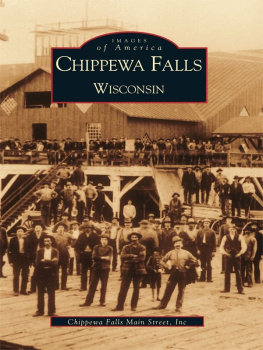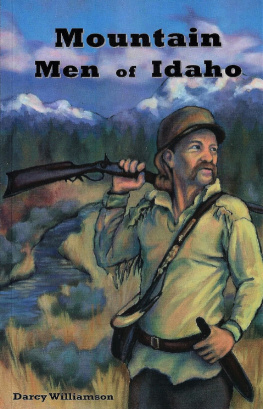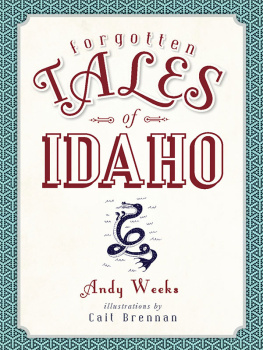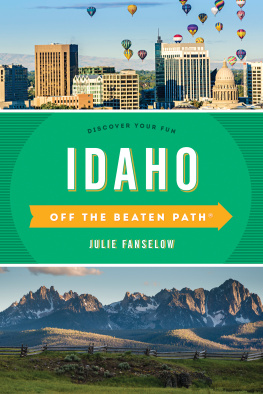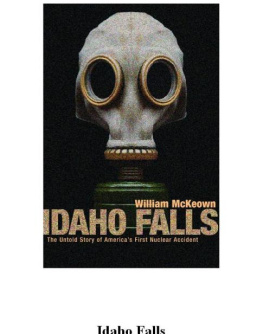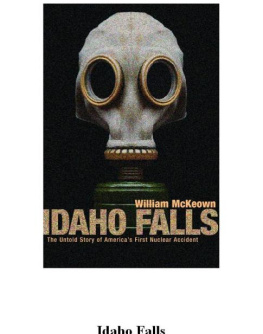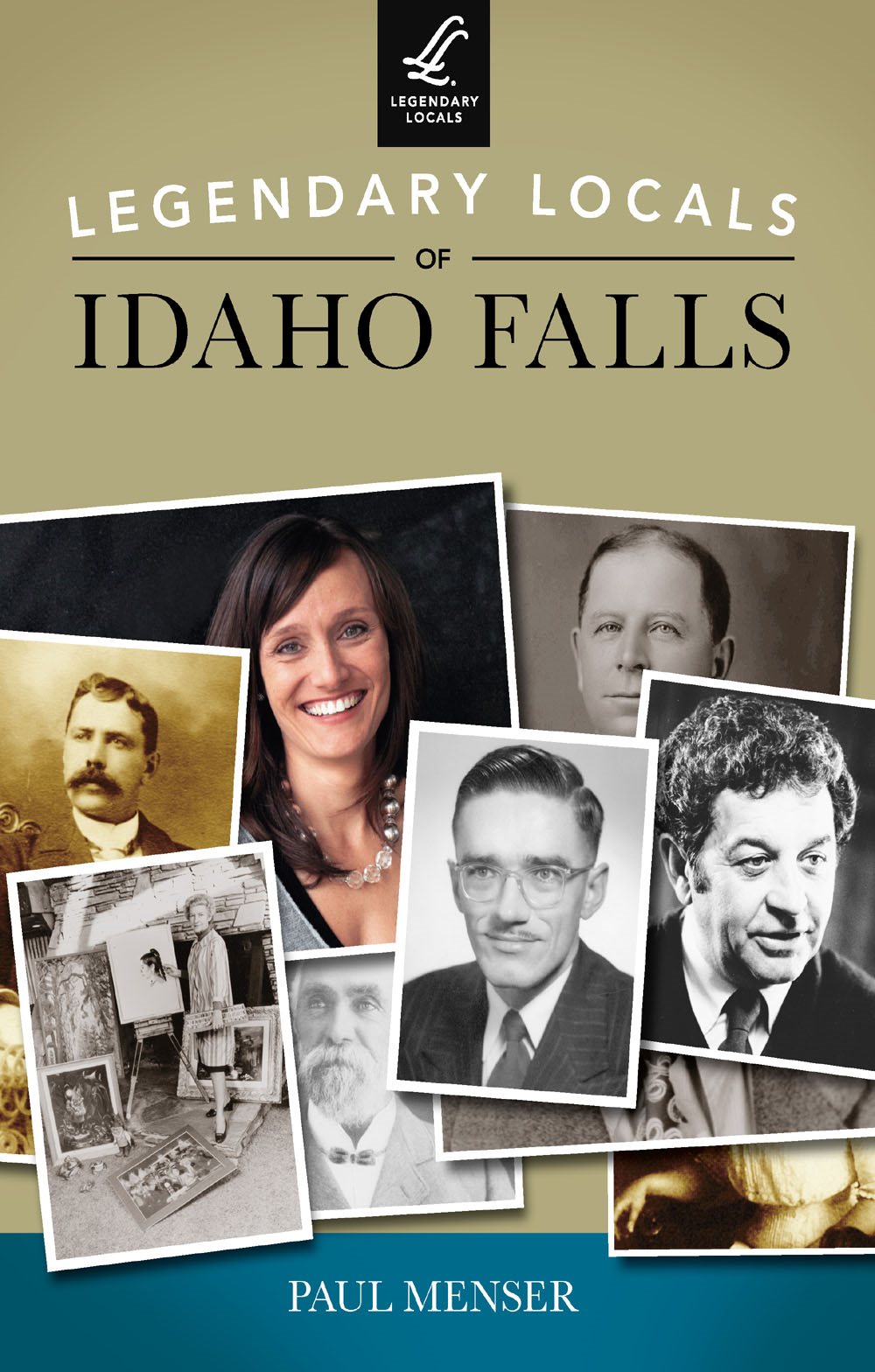
LEGENDARY LOCALS
OF
IDAHO FALLS
IDAHO

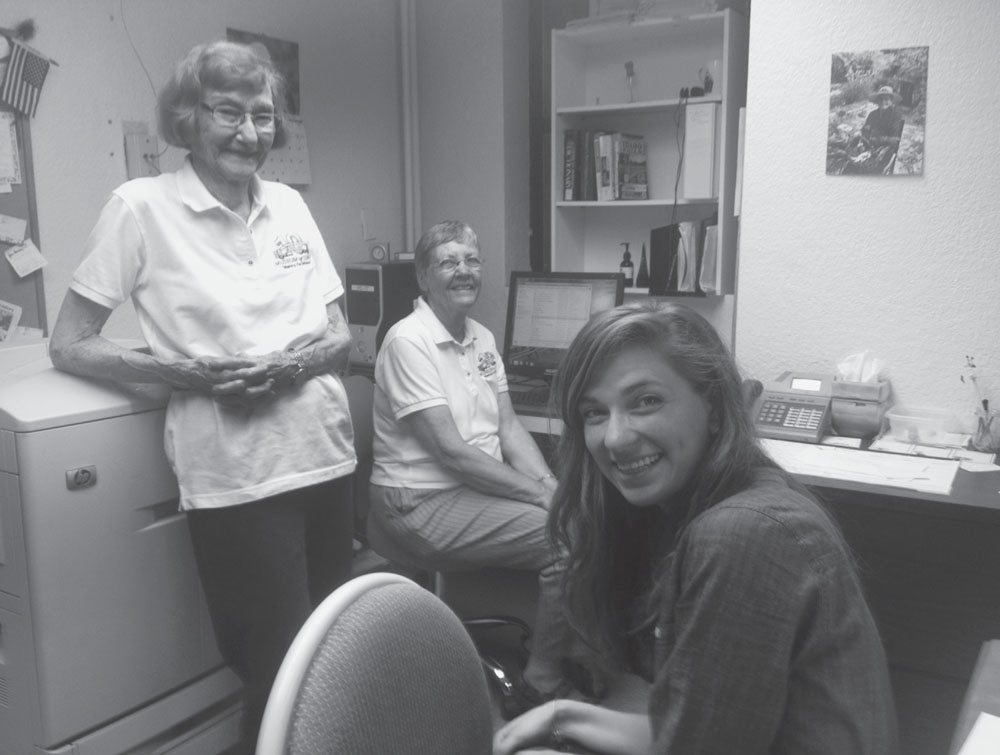
History Central
Pictured here is the Reading Room at the Museum of Idaho (MOI), owned by the Bonneville County Historical Society, and the two women who staff it, LaDean Harmston (left) and Judy House (center). In the foreground at right is MOI curator Claire Smith, whose great-grandfather David Smith is one of the legendary locals featured in this book (see ). The museum is a top repository of historical information and photographs of Eagle Rock and Idaho Falls. The imposing Carr Atrium was built in 2002 to join two buildings from the early 20th century: the old Public Library, which had been built with a grant from Andrew Carnegie in 1916, and the Masonic Lodge, which was remodeled in 2002, one hundred years after its construction. (Author photograph.)
: In the Clubhouse
Idaho Falls Golf Association members pictured in 1948 are, from left to right, (first row) Spike Ballard, Bill Gourley, B.L. Harris, George Orullian, and Russ Freeman; (second row) Jack Couch, A.M. Smith, Ross Corbett, N.O. Anderson, S. Eddie Pedersen, and J. Robb Brady. (Courtesy of Idaho Falls Parks and Recreation.)
LEGENDARY LOCALS
OF
IDAHO FALLS
IDAHO
PAUL MENSER

Copyright 2015 by Paul Menser
ISBN 978-1-4671-0168-4
Ebook ISBN 9781439649619
Legendary Locals is an imprint of Arcadia Publishing
Charleston, South Carolina
Library of Congress Control Number: 2014933838
For all general information, please contact Arcadia Publishing:
Telephone 843-853-2070
Fax 843-853-0044
E-mail
For customer service and orders:
Toll-Free 1-888-313-2665
Visit us on the Internet at www.arcadiapublishing.com
Dedication
To my father, David Menser, who believed in the ideals of democracy and the possibilities of community.
On the Front Cover: Clockwise from top left:
Rachel Martin (courtesy of National Public Radio, see ).
On the Back Cover: From left to right:
Ed F. Winn (courtesy of the Museum of Idaho, see ).
CONTENTS
ACKNOWLEDGMENTS
I believe any person has an epic story to tell if he or she is willing to see it that way. Trying to condense any persons story down to a few hundred words is a huge challenge, yet I have discovered that the cumulative impact of all these short sketches is a picture of our community that might shed new light on who we are.
This project has been a deep dip into Idaho Fallss history, yet my greatest worry is that I neglected someone who ought to be included; for that, I apologize. I have lived here 32 years and written a weekly history column for more than a decade, yet there are still people I either dont know about or whose significance I dont fully recognize.
The greatest pleasure I received from this project has been the conversations I had with the children and grandchildren of many of the people in this book. Likewise, I am grateful for the help I received from the Museum of Idaho and the Idaho Falls Post Register. Individually, I wish to credit Monte LaOrange at the newspaper and LaDean Harmston and Judy House at the museum. Their assistance and good humor were invaluable. From the Post Registers past, I wish to credit Robert Bower, Randy Hayes, and Bob Schwieger, three photographers with whom I worked in my newsroom days and whose images appear in this book.
My reading in the Idaho Room of the Idaho Falls Public Library was enlightening. A few books were essential to the profiles of the people in this book, and I encourage anyone with a deeper interest in local history to read them:
Second Stories Revisited: Historical Narratives of Idaho Falls Women by Cheryl A. Cox and Lexie French
Idaho Falls, City of Destiny by Mary Jane Fritzen
Idaho Falls by William Hathaway
Bonneville County in the Making by Barzilla W. Clark
Unsung Heroes and Settlers of Bonneville County, Idaho by Connie Otteson
Beautiful Bonneville, County of Contrasts by Alice Horton, Afton Bitton, and Patti Sherlock
The information on the Bonneville County Heritage Associations website was essential, and without the historical record provided by the Post Registerall on microfilm at the Idaho Falls Public Librarythere would be huge gaps in the story. However imperfect they may sometimes be, news accounts and obituaries are vital to our comprehension and understanding of the past.
I am very grateful for old Polk City Directories, which dont have much in the way of plot but offer valuable information about where people worked and lived and who was related to whom.
Last of all, my hat is off to two newsmen now gone on to greater glory: Joe L. Marker, my old friend and colleague at the Post Register, and Perry Swisher, the public utilities commissioner who was always good for an interesting story. It is a privilege to have known them.
Paul Menser
July 2014
INTRODUCTION
At its most romantic, the past is a place full of barn dances, front porches, and lodge meetings. People had time for other people. There was no television, so families gathered in the kitchen or living room to listen to Jack Benny on the radio and sing around the piano. Wives stayed home to take care of the children, because a husband could earn enough to support a family by himself.
The story of Idaho Falls over the past 150 years is a story common to thousands of American towns. Roads were paved. Men went to war. Indoor plumbing replaced the outhouse.
What sets Idaho Falls apart? One thing would be water. Due to the citys hydroelectric power projects, Idaho Falls enjoys some of the lowest electricity rates in the nation. Because of irrigation, the Snake River Valley is one of the worlds largest unbroken pieces of irrigated farmland.
Idaho Falls changed its name from Eagle Rock in 1891 on the recommendation of businessmen who thought the new name had less of a frontier ring. The people who built the town live on in the names of roads, streets, parks, schools, and businesses.
Longtime newsman and local historian Joe Marker remembered Ethel Boyes, his teacher at Emerson Elementary School. She had the gall to be herself, he said. As for O.E. Bell, the namesake of a junior high school (now an office building), Marker mused, robust fellow... strict as all get out.
Was life better? The late Perry Swisher, another newsman, remembered the 1930s, when his father managed a farm cooperative and nobody had any money. The entire economy was based on a bartering system. Services were traded for items such as quilts, canned goods, and firewood. The Mormon culture made it less tough for people, he said.
During the Great Depression, nearly one quarter of the working people of the United States did not have jobs. In eastern Idaho, that was tempered somewhat by the areas farms. No one who wanted to work had to stand around for lack of a job. But the workdigging beets and potatoes by handwas monotonous and grueling.
Methods of healing and relief from pain taken for granted today were unthinkable as recently as 75 years ago. Before antibiotics, even an infected cut could kill. Your medical help was your neighbor, said Sharon Bennett, whose grandparents built a landmark house on Sunnyside Road. She recalled the story of an aunt who died in the influenza epidemic of 1918. The funeral was held on the front porch, she said. Nothing was held inside, because people were so deathly afraid.
Next page

